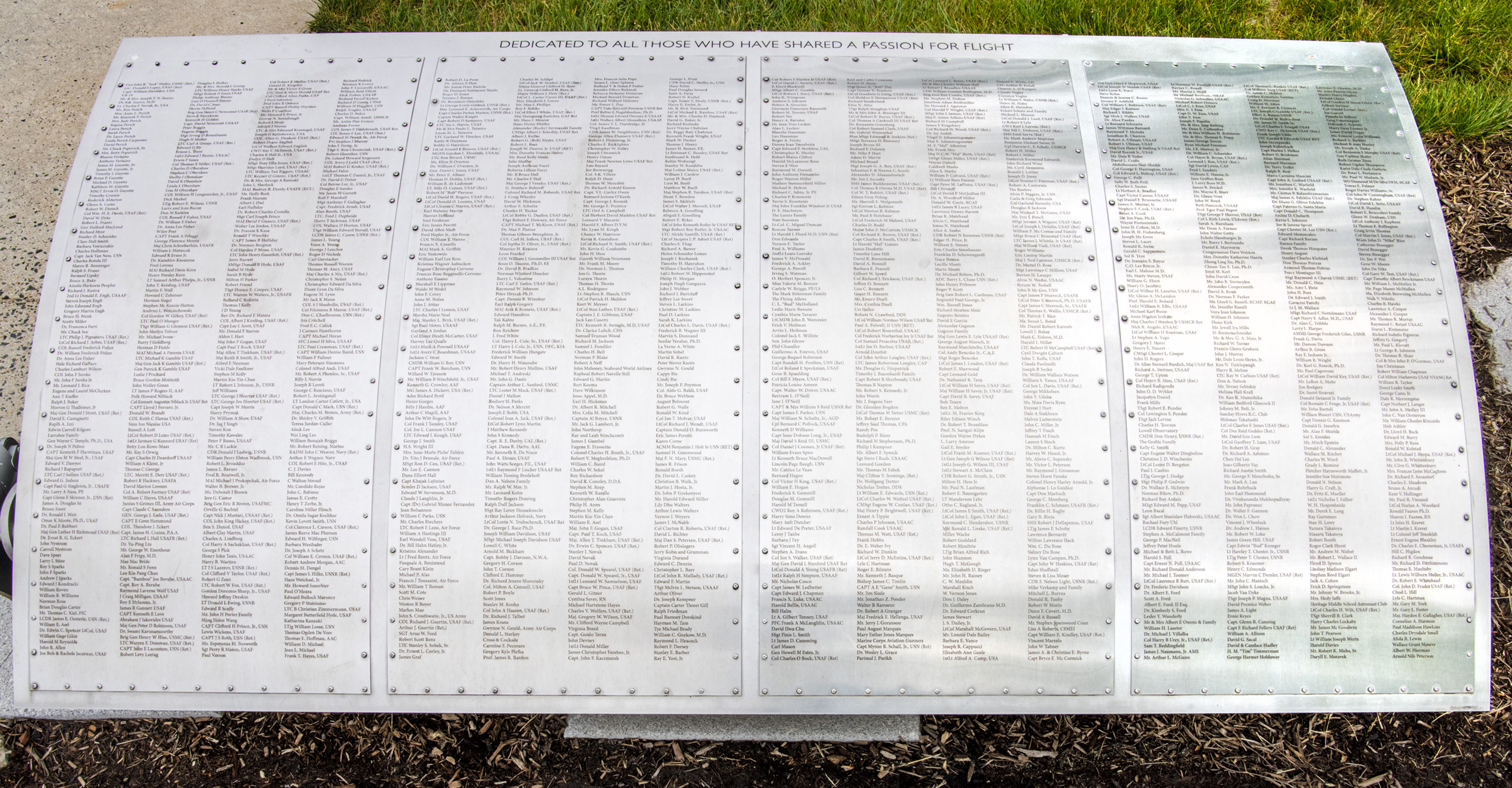
Foil: 1 Panel: 1 Column: 4 Line: 72
Wall of Honor Level:
Air and Space Friend
Honored by:
A man of many 'firsts' might be a good way to describe retired Army Maj. Charles M. Brown, the Army's first black aviator and Fort Rucker's Honored guest for a Black Heritage and Achievement Week.
The first black Army aviator to command a major Army Aviation Unit (Reserve), the first and only to serve in the Korean Conflict, earning five Air Medals and recommended for the Distinguished Flying Cross, he extended his achievements into the civilian world by being selected as Assistant Secretary to the District of Columbia City Council, another first for a black American.
While the word "achievement" might be the best way to describe Brown's life, it was a rough road that led from his initial Introduction to the Army in World War II, to the success he has known today.
"I was drafted into the Army as an enlisted man in March of 1941. I took my basic training at Fort Bragg, N.C., in the Field Artillery Placement Training Center. From there I volunteered for Officer Candidate School and went to the Field Artillery School in Fort Sill, Okla., and finished there in October of 1942. [In 1985 Major Black was inducted into Fort Sill's Field Artillery Officer Candidate School Hall of Fame.]
"Then I was assigned to the 597th Field Artillery, 92nd Infantry Division."
Brown began his flight training in the L4-H, a civilian derivative of the Piper Cub aircraft, at the Army Air Force Flight Training Detachment in Pittsburg, Kansas, in April of 1943.
The next hop from there was a long one. It took him all the way to France with the 351st Field Artillery. He was still flying L4s, which had by now acquired the nickname, "Grasshopper."
"I worked at corps level so the missions I flew were few and far between, he said. "Most of the flying done in adjustment of artillery fire was done by the division level pilots as they were organic to their own (field artillery) units. I did fly about 30 hours though, mostly on courier missions and flying the 'brass' back and forth. There were times when corps artillery was in support of division artillery and we flew observation and artillery spotting missions.
"I remember, in particular, when we crossed the Rhine River. I guess the artillery had been firing from 15 to 18 hours constantly. Our planes were in the air continuously throughout the barrage adjusting fire on the other side."
One of the dangers of being an observation pilot during this time was the ever-present possibility of being struck mid-air by "friendly" artillery shells while circling above the battle area observing the artillery fire.
Brown said, "Each time we took to the air we knew the direction and the placement of our artillery in relation to the target area. We made it a point not to fly along that flight path."
Brown was commander of the first convoy of Polish and Czechoslovakian displaced persons, leaving Schwerin, Germany and arriving at Kracow, Poland and Pilsen, Czechoslovakia May-June 1945.
He was the first black Army aviator to serve in the Korean War where he earned the Air Medal and was recommended for the Distinguished Flying Cross in 1950.
Maj Brown was the first black to command an Army aviation unit, the 327th Helicopter Transportation Company (Reserve) at Fort George G. Meade, MD, 1963-1965.
He retired with over 6900 hours of flying time, including 800 hours in combat.
Wall of Honor profiles are provided by the honoree or the donor who added their name to the Wall of Honor. The Museum cannot validate all facts contained in the profiles.
Foil: 1
All foil images coming soon.View other foils on our Wall of Honor Flickr Gallery
